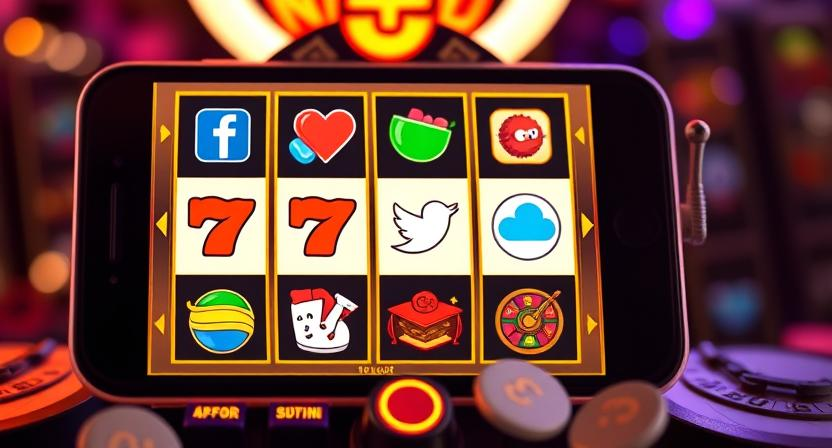Infinite Scroll
Infinite Scroll, invented by Aza Raskin in 2006 at Humanized, revolutionized content consumption by eliminating pagination. Popularized by Instagram and others, it boosts engagement but is criticized for addictiveness.

Infinite Scroll: The Endless Swipe That Changed Digital Engagement
In the ever-evolving landscape of user interface (UI) and user experience (UX) design, few innovations have left as profound a mark as "Infinite Scroll." This seamless, continuous loading of content as users scroll down a page has redefined how we interact with digital platforms, particularly social media. From its humble origins to its global adoption, infinite scroll is both a celebrated triumph and a cautionary tale of design’s unintended consequences. Let’s dive into its impact, origins, and the minds behind this game-changing feature.
The Impact: A Double-Edged Scroll
Infinite scroll fundamentally transformed online content consumption by eliminating the need for pagination—those numbered pages or "Next" buttons that once punctuated our browsing. Instead of manually clicking to load more, users now enjoy an uninterrupted flow of articles, posts, or images, effortlessly delivered as they scroll. This frictionless experience has become a hallmark of modern social platforms like Twitter, Facebook, and Instagram, keeping users hooked by feeding them a steady stream of fresh content.
The result? Longer engagement times and a more immersive digital experience. Infinite scroll taps into our curiosity, subtly nudging us to keep going, to see what’s next. It’s a defining feature of the attention economy, where platforms thrive on holding our gaze. However, this innovation isn’t without its critics. Many argue it fosters endless browsing, blurring the line between intentional exploration and mindless scrolling. The feature’s addictive nature has sparked debates about its impact on mental health and productivity, making it a polarizing milestone in UI/UX history.
The Origins: From Experiment to Ubiquity
The brain behind infinite scroll is Aza Raskin, a designer and entrepreneur who invented the feature in 2006 while working at Humanized, a UI design firm. Raskin’s goal was to streamline content discovery, creating a fluid browsing experience that felt natural and intuitive. His experiment succeeded beyond expectation, but its widespread adoption came years later, driven by the rise of social media.
Infinite scroll found its true footing in the early 2010s, thanks to platforms like Twitter and Facebook, which embraced it to keep feeds dynamic and engaging. However, it was Instagram—under the leadership of co-founder Kevin Systrom—that refined and popularized the feature, turning it into a cornerstone of mobile UX. Systrom and his team saw infinite scroll as a way to make photo-sharing seamless, allowing users to lose themselves in an endless cascade of visuals. By the time Instagram cemented its dominance, infinite scroll had become synonymous with modern digital design.
Interestingly, Raskin himself has since voiced regret over his creation. In interviews, he’s acknowledged its role in fueling compulsive behavior, calling it a "slot machine" for the mind. Despite his reservations, the feature’s momentum was unstoppable, propelled by tech giants who saw its potential to maximize user retention.
The Legacy: A Scroll Without End
Infinite scroll’s journey from a niche experiment to a global standard is a testament to the power of simplicity in design. It stripped away barriers, making content consumption feel effortless and instinctive. For better or worse, it’s shaped how billions of people navigate the web, turning passive browsing into an active, almost hypnotic ritual.
For designers, infinite scroll offers a lesson in balance. It’s a brilliant example of aligning digital tools with human behavior—our innate desire to explore—but also a reminder that powerful innovations can have unintended ripple effects. As platforms continue to evolve, some are even rethinking infinite scroll, introducing features like "end-of-feed" prompts to curb its excesses.
In the end, infinite scroll stands as a defining UI/UX experiment: a small idea with outsized influence. Whether you see it as a triumph of engagement or a cautionary tale of addiction, one thing is clear—it’s a scroll that’s here to stay, endlessly shaping our digital world.
About the Author
Hina Firdause is a seasoned professional with nearly 10 years of experience. Currently based in Bengaluru, she works with Niti AI, where she leverages her expertise to drive innovative solutions. Passionate about technology and business, she actively engages in discussions on emerging trends, including no-code platforms and fintech disruptors, offering insightful perspectives drawn from her extensive industry experience.
